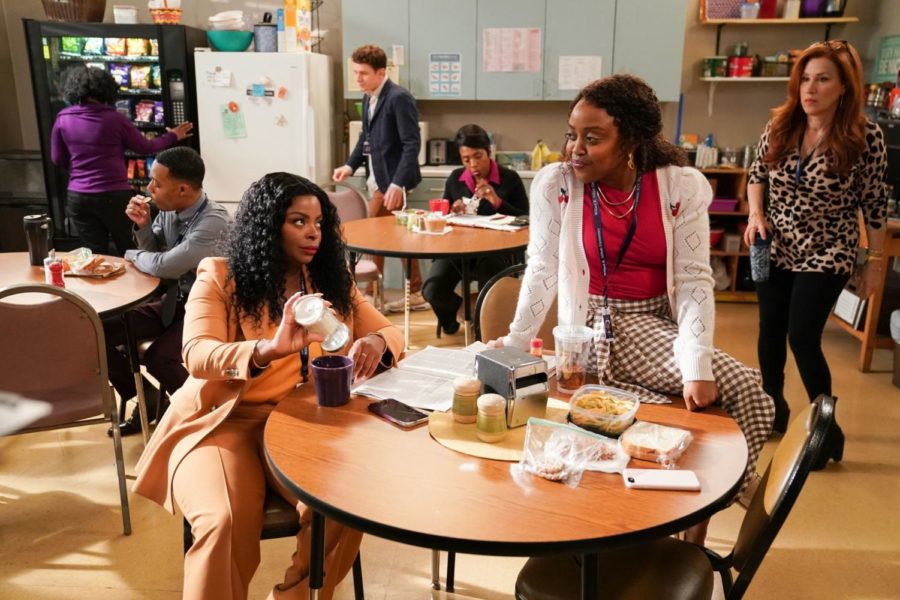“Abbott Elementary” is bringing the sitcom back
“Abbott Elementary” has resurged the popularity of network sitcoms, which have been struggling with viewership for the past several years.
March 3, 2023
After an influx of network sitcoms in the early 2000s to mid-2010s, including hits such as “The Office,” “Modern Family” and “Brooklyn Nine-Nine,” the genre has all but died out in recent years. Though comedy shows remain popular on most streaming platforms—think “Ted Lasso” on Apple TV+ and “The Marvelous Mrs. Maisel” on Amazon Prime Video—those airing on network TV face low ratings and a lack of viewership. The number of Americans who have a cable and/or satellite subscription have dropped from 76% in 2015 to 56% in 2021. This means that it’s harder than ever for a traditionally-aired show to become a hit. Even if a new network sitcom was funny and well-written, would there be enough people who cared to watch it?
Thankfully, “Abbott Elementary” has managed to have this kind of breakthrough. Airing its first episode on ABC in December 2021, the sitcom, created by and starring Quinta Brunson, has since won three Emmys and earned the network’s highest comedy ratings since the finale of “Modern Family.” It also has an overall viewership of 10 million, compared to other ABC comedies such as “The Conners” which had 4.76 million viewers in its latest season and “Home Economics” whose viewership topped out at 1.92 million. Part of “Abbott Elementary’s” high numbers may be owed to its simultaneous availability on Hulu and HBO Max, but its popularity can really only be the result of one thing: it’s simply a good TV show.
“Abbott Elementary” sticks to the tried-and-true elements of past sitcoms with its workplace setting and mockumentary format, while also updating the context of the show for modern audiences. It takes place in a majority-Black Philadelphia elementary school and focuses on five of its teachers, including Barbara Howard (Sheryl Lee Ralph), Gregory Eddie (Tyler James Williams) and their inept but loveable principal Ava Coleman (Janelle James). Each episode has its own self-contained plot and subplot, but several storylines—including a slow-burn relationship between Janine Teagues (Brunson) and Gregory—develop over the course of the show. This comforting setup serves as the framework for jokes and character quirks that are genuinely funny and resonate with viewers regardless of how familiar they are with teaching.
Another reason “Abbott Elementary” hits home for a lot of people is because of its representation. It was vital to Brunson that she accurately portrayed the setting of a Philadelphia public school. This meant that most of the teachers, students and the principal would be Black, not for the sake of diversity, but for authenticity. “I feel that … the key to more diversity in television is not just sticking characters into a white world, but actually green-lighting the stories that naturally bring those people to the forefront,” says Brunson. “We weren’t worried about diversity at all while we were making the show. We were worried about being funny.”
Brunson’s methods clearly worked. “Abbott Elementary” is the most-tweeted about TV comedy of the year, and has celebrity fans including Kerry Washington, Jada Pinkett Smith and Gabrielle Union, to name a few. Brunson herself has also shot to fame, this month sitting front row at several New York Fashion Week shows. The success of “Abbott Elementary” not only proves that sitcoms and network TV are here to stay (for now), but it is also a testament to the value of authentic storytelling and representation.
“Abbott Elementary” airs Wednesdays at 9 p.m. EST and is available to stream the next day on Hulu.



